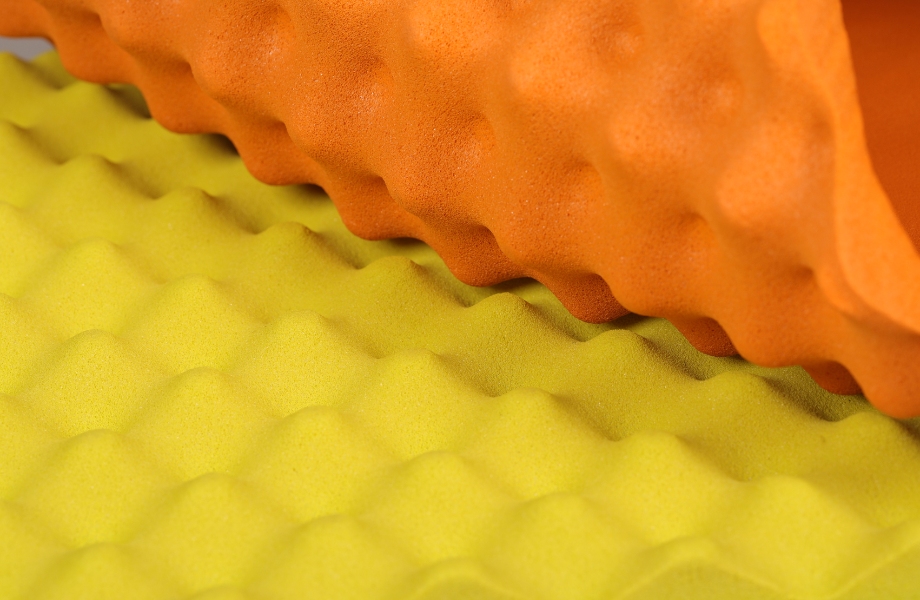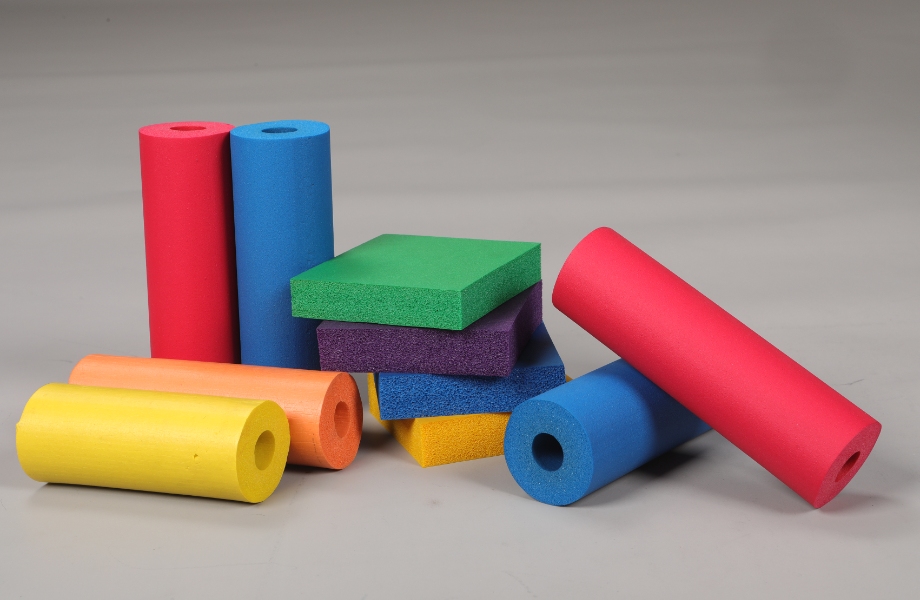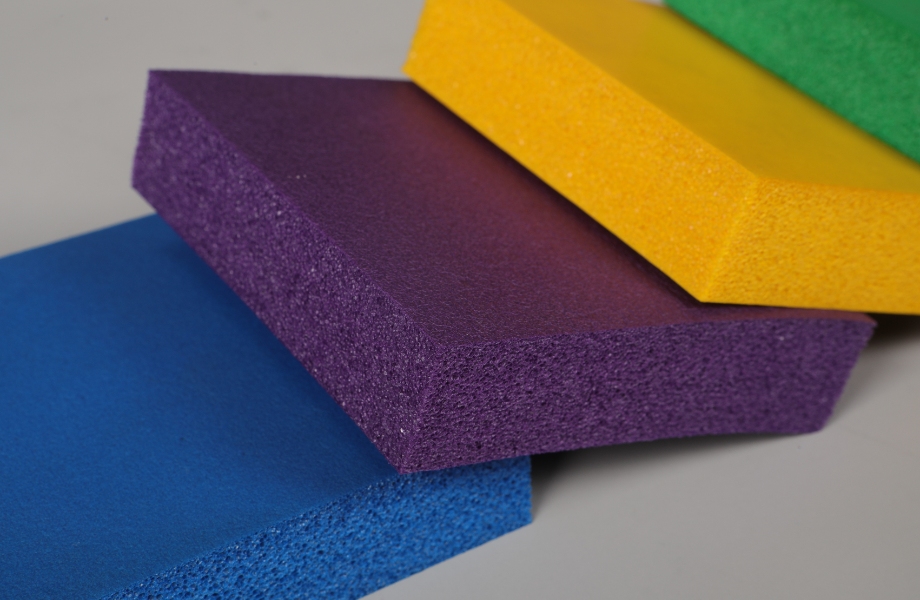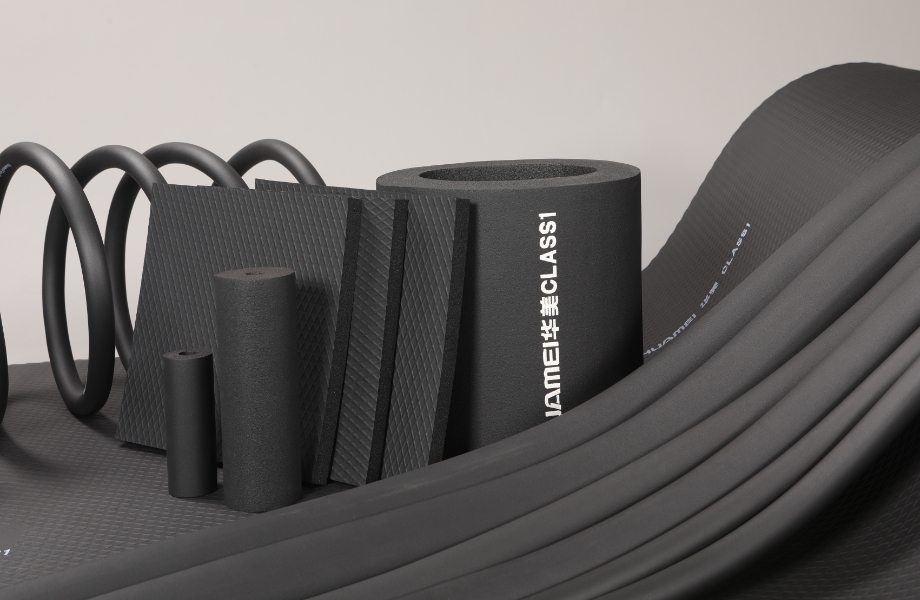E-mail: marketing@hbhuamei.com
Did you know 70% of urban residents endure noise levels exceeding WHO safety limits? This constant exposure increases heart disease risk by 15% and slashes productivity by 26%.
Traditional fiberglass and spray foam insulations often worsen environmental harm—containing toxic VOCs or ending in landfills where they linger for centuries .
Rubber foam sound insulation merges acoustic excellence with radical sustainability. Made from recycled tires or natural latex, it cuts noise by up to 45 dB while slashing carbon footprints by 40-60% versus synthetics .

Having explored rubber foam’s material properties, we now examine its core advantages. These benefits make it a top choice for sustainable projects.
Rubber foam delivers exceptional noise reduction. Its dense structure absorbs sound waves effectively. Test data shows STC ratings of 45-50 for rubber foam. This outperforms fiberglass (STC 32-35) and polyurethane foam (STC 38-42). NRC ratings reach 0.85-0.95. This means 85-95% of sound energy gets absorbed. The closed-cell design blocks airborne and impact noise. This includes traffic sounds and machinery vibrations. Installation in walls or floors creates noticeable quiet.
The environmental impact of rubber foam sets it apart. Most products use 60-100% recycled tire rubber. This diverts waste from landfills. Production requires 40-60% less energy than synthetic alternatives. Carbon emissions are 50% lower than fiberglass. Rubber foam lasts 20+ years without degradation. At end-of-life, 90% is recyclable into new products. These traits define true eco-friendly sound insulation. Third-party audits confirm these sustainability claims.
After reviewing rubber foam’s benefits, we explore its technical foundations. Understanding these properties ensures optimal material selection.

Natural rubber foam comes from latex sap. It offers excellent elasticity. Recycled rubber foam uses processed tires and industrial scrap. This type has higher density at 80-120 kg/m³. Both resist moisture and mold. Fire resistance differs significantly. Natural foam achieves Class B fire ratings. Recycled rubber foam often reaches Class A due to added retardants. Durability favors recycled variants. They withstand heavy impacts without tearing. Natural foam excels in vibration absorption.
Density determines sound blocking strength. Ranges span 60-120 kg/m³. Higher density improves impact noise reduction. Thermal stability is critical. Rubber foam functions between -40°C and 120°C. This prevents cracking in freezing winters. It avoids melting near hot pipes. Lifespan exceeds 20 years outdoors. UV-resistant versions prevent sun damage. Compression resistance maintains thickness under load. These traits ensure long-term recycled rubber foam performance.
When dealing with rubber foam, its installation is just as important as its properties in determining performance in real-life scenarios. Proper eco-friendly sound insulation outcomes rely on the processes undertaken during installation.
Begin with surface preparation. Clean walls and floors, including HVAC surfaces thoroughly. Grease and dust must be removed using isopropyl alcohol. Measure the area requiring rubber foam sound insulation. Transfer measurements to the foam sheet and cut along marked lines using a utility knife. Apply foam evenly solvent-free adhesive on surfaces needing rubber foam application. Position the foam firmly against the substrate and ensure that working on the edges is given priority to prevent air gaps. For HVAC systems, foam should be wrapped around ducts tightly. End touches can be secured using aluminum foil tape. A 24 hour period should be set aside before finishing layers to applying pressure.
Use low-TVOC adhesives for eco-friendly sound insulation. Water-based acrylic adhesives are known to off-gas which makes them suitable. Use butyl tape to seal seams between rubber foam sound insulation sheets.Overlap sections by 2 inches for consistent coverage. Apply liquid seam sealant on moisture-prone areas such as basements. Resilient channels should be used beneath wall-mounted foam to decouple the structures and block the vibration transfer. While curing adhesives, provided ventilation should be available. N95 Masks should be worn while cutting foam, and certified rubber recycling programs should be used for disposal of scraps.
Following proper installation, verifying performance metrics confirms rubber foam’s superiority. These measurements quantify real-world effectiveness.
Rubber foam sound insulation achieves an STC 45 rating. This means loud speech becomes inaudible through barriers . Cork insulation averages STC 32. At this level, normal speech remains clearly understandable . Cellulose reaches STC 35. Here, loud speech is heard and understood . The 10–13 point STC advantage of rubber foam over alternatives is significant. Every 5-point STC increase halves perceived noise . This makes rubber foam ideal for spaces needing privacy. Examples include offices and homes near busy streets.
Rubber foam delivers strong thermal resistance. Its thermal conductivity measures 0.030–0.036 W/m·K . This outperforms cork (0.040 W/m·K) and cellulose (0.040–0.050 W/m·K) . Buildings using rubber foam report energy savings of 15–30% on heating and cooling costs . This reduction comes from minimized heat transfer through walls and pipes. Long-term utility bills decrease substantially. The material’s closed-cell structure prevents thermal bridging. Consistent indoor temperatures require less HVAC effort. This efficiency supports sustainable building goals.

After comparing rubber foam’s performance metrics, its environmental credentials solidify its role in sustainable construction. These certifications and lifecycle benefits validate eco-friendly claims.
Rubber foam’s recyclability rates exceed 90% in closed-loop systems, diverting tires from landfills . It repurposes waste into durable products like playground surfaces or athletic tracks. The material resists biodegradation for over 100 years due to vulcanization, but this longevity reduces replacement needs . Production using recycled content cuts carbon emissions by 40-60% versus virgin synthetics . End-of-life recycling involves shredding and devulcanization to reclaim rubber polymers .
ISO 14001 compliance ensures manufacturers minimize pollution and resource waste through audited environmental management systems . GREENGUARD Gold certification guarantees ultra-low VOC emissions (< 360 chemicals), critical for schools and hospitals . Products with this certification contribute to LEED credits in green building projects, particularly for low-emitting materials . REACH and FDA approvals further validate safety in food/medical applications . FSC/PEFC certifications trace sustainable rubber sourcing to combat deforestation .
Following rubber foam’s environmental credentials, its financial advantages solidify its value proposition. These economic benefits make rubber foam sound insulation a strategic investment for budget-conscious projects.
The initial cost efficiency of rubber foam sound insulation ranges from $1.20–$2.50 per sq ft for standard applications . While higher than fiberglass ($1–$5 per sq ft), rubber foam’s 20–50-year lifespan eliminates replacement costs linked to traditional materials . Energy savings of 15–30% on heating and cooling bills accelerate ROI . For example, insulating 1,000 sq ft costs ~$2,000 upfront but saves ~$540/year in energy . Over 10 years, this equals $5,400 in savings, offsetting installation costs within 3–5 years .
Beyond cost and environmental benefits, rubber foam excels in diverse practical scenarios. Its adaptability solves noise challenges across industries and daily spaces.
Rubber foam dampens vibrations in soundproofing applications for vehicles and machinery. In automotive settings, it lines engine bays to reduce noise by up to 40%, enhancing driver comfort . For manufacturing, it isolates high-vibration equipment like compressors and generators. This controls solid-borne noise (structural vibrations) and airborne noise (operational sounds), protecting worker health and meeting industrial safety standards . Its heat resistance (-40°C to 120°C) ensures stability near engines or hot machinery .
In residential spaces, rubber foam serves as underfloor insulation, blocking impact noise (footsteps, furniture) and improving thermal efficiency . Customizable acoustic panels absorb mid-to-high-frequency sounds in home theaters and offices, reducing echo by up to 85% . For podcast studios, it minimizes reverb during recordings. When applied to walls or ceilings, its NRC 0.85 rating ensures vocal clarity by absorbing stray sound waves . HVAC systems also benefit, with foam-wrapped ducts cutting airflow noise by 30% .

Rubber foam sound insulation outperforms traditional materials by merging acoustic excellence with radical sustainability. It achieves 30-45% superior noise blocking versus alternatives while utilizing 60-100% recycled content. This dual strength reduces landfill waste and energy consumption. Production emissions are 40-60% lower than synthetic insulations. Long-term performance is guaranteed, with 20+ year lifespans requiring zero replacements. These traits align with global green building standards like LEED and BREEAM. For optimal results, partner with a certified rubber foam manufacturer.
Explore certified rubber foam sound insulation solutions for your next project.
Copyright © Huamei Energy-saving Technology Group Co., Ltd. All Rights Reserved | Sitemap | Privacy Policy
Insulation solutions LIST: Insulation solutions LIST